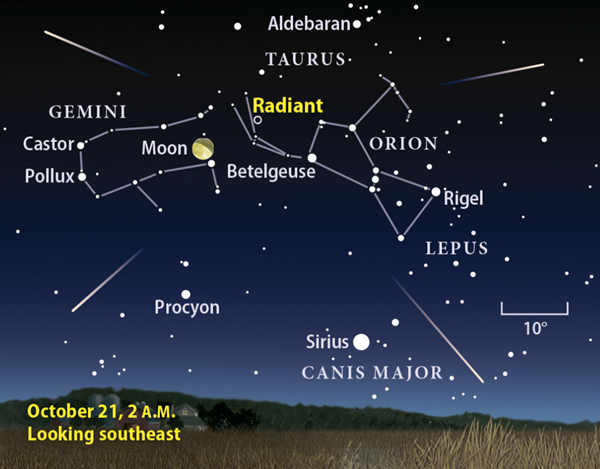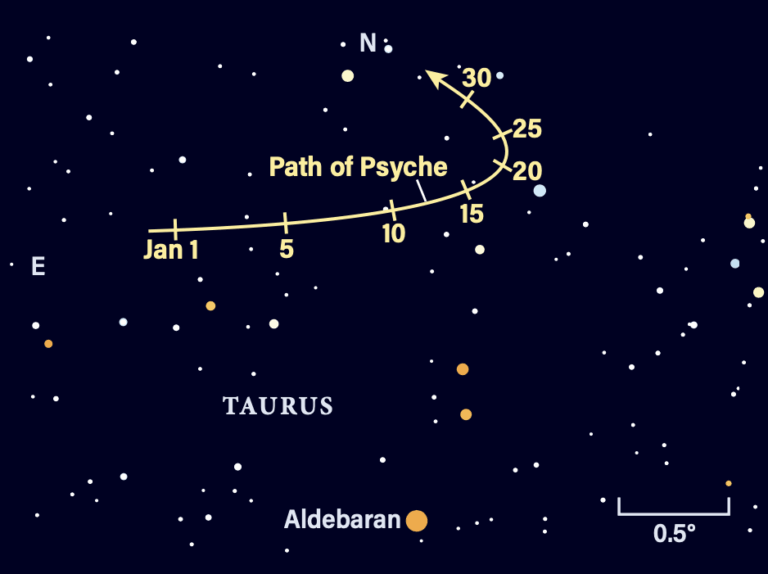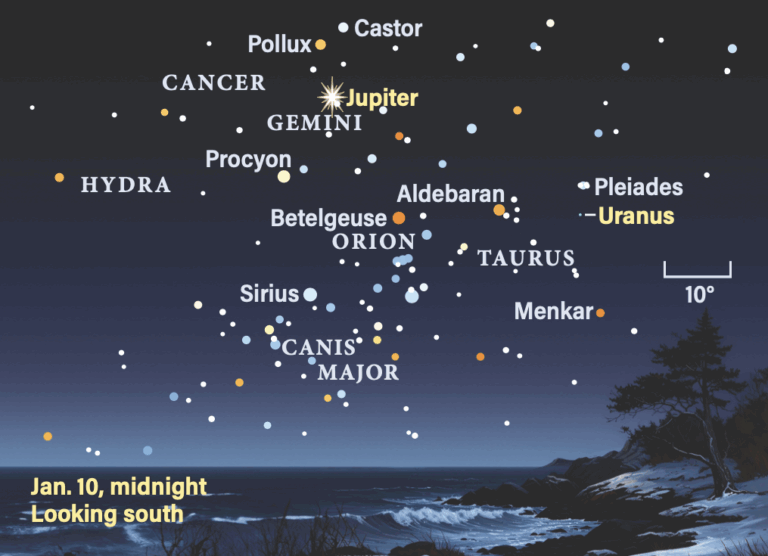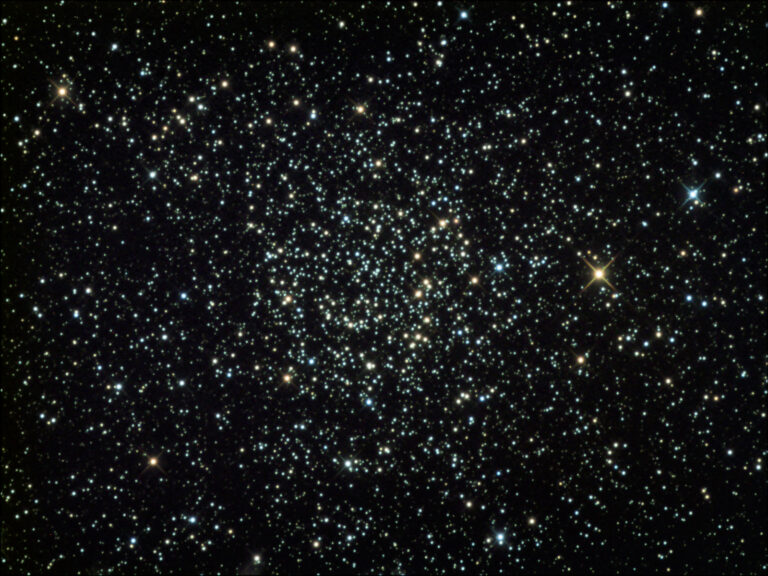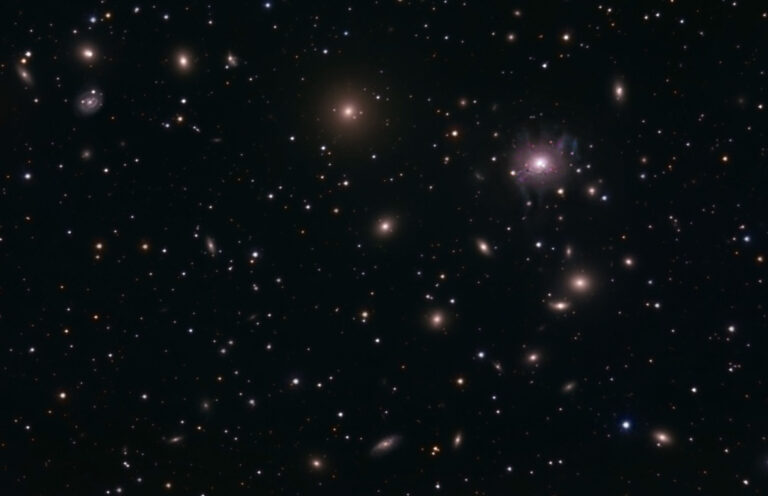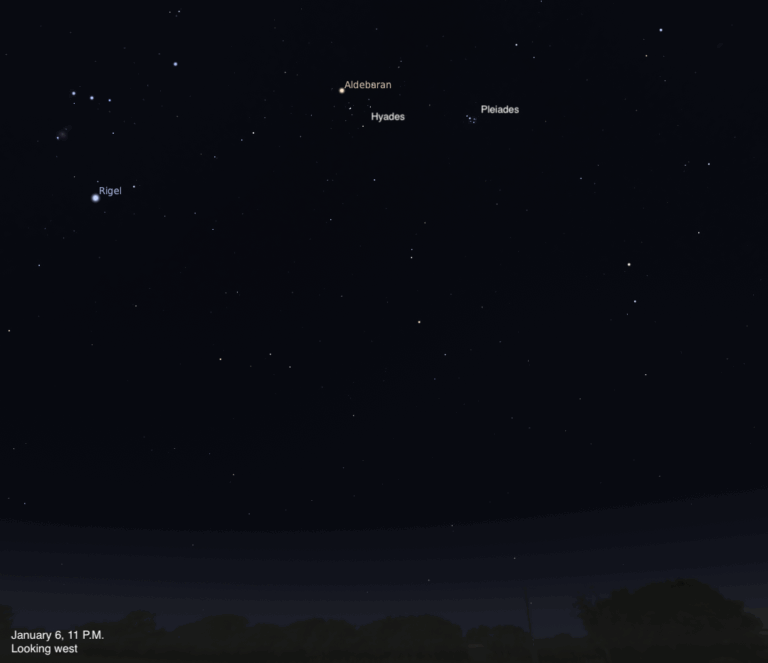Prospects look fair for the peak of this year’s Orionid meteor shower, which occurs before dawn October 21. Streaking swiftly across the sky, tiny bits of rock and metal burn up as meteors. Although Earth constantly sweeps up interplanetary dust, our planet runs through a slightly denser trail this month. Astronomers call this event the Orionid meteor shower because all of the meteors appear to radiate from the constellation Orion.
According to Astronomy magazine Contributing Editor Ray Shubinski, conditions should be good but not optimum this year. “A waning gibbous Moon will share the sky with the Orionids during the best viewing hours after midnight,” he said. “The best guesses say the Moon will cut the number of visible meteors in half.”
The radiant — the point in the sky where all the meteor trails trace back to — lies in northeastern Orion, where that constellation borders Gemini the Twins. The Orionids’ radiant rises before midnight and stands high in the south by 4 a.m. local daylight time, a full 2 hours before dawn.
Rates can reach 30 meteors per hour, and occasionally more. The predawn hours offer the best viewing because that’s when your location will face Earth’s direction of travel. Essentially, after midnight Earth will be running into the meteors.
Orionid meteors are among the fastest of all shower meteors, striking Earth’s upper atmosphere at 148,000 mph (238,000 km/h). Many leave persistent trains — glowing tubes of ionized gas created by the dust particles burning up.
All Orionid meteors originate from debris left behind by Halley’s Comet during its passages through the inner solar system. Earth’s orbit intersects this debris trail in two places, resulting in this fine autumn shower and another good one in May called the Eta Aquarids.
It’s best to view meteor showers without optical aid because binoculars or a telescope restrict the field of view. If you must observe before midnight, face eastward and look about halfway up. From midnight to 2 a.m. local time, looking overhead will probably net you the most meteors. And from 2 a.m. until dawn, look roughly halfway up in the west. Glancing around now and again won’t hurt your chances of seeing the maximum number of meteors. And this year, if you position yourself with the Moon at your back (preferably behind some trees or buildings), you’ll increase the chances for a good show.

